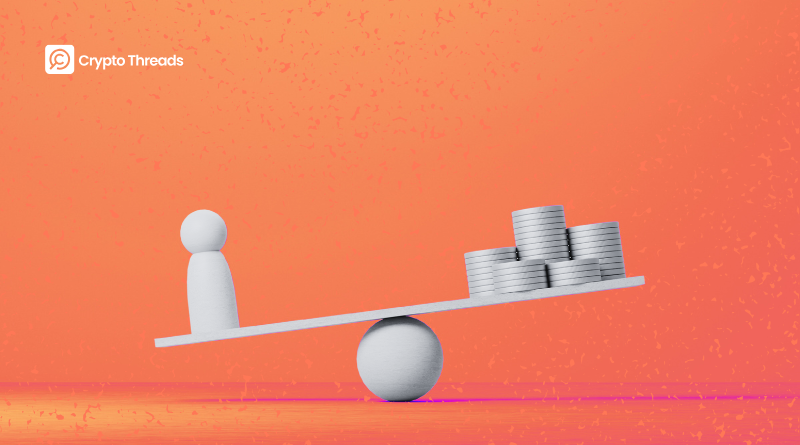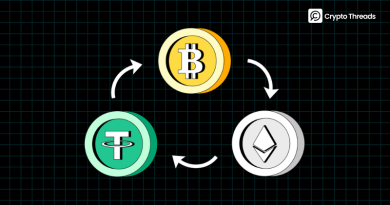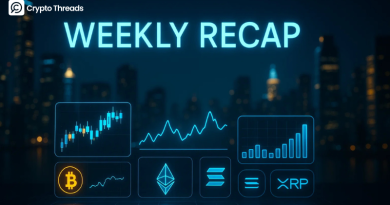How Leverage Affects your Return on Investment
What is Leverage?
The term “leverage” roots in the concept of “lever” in physics, which magnifies a small input force into a greater output force. Likewise, leverage, or margin trading, is a tool that enables traders to trade multiple times of asset amount in their account balance while the rest of needed funds are borrowed (mostly from the exchanges). For example, to buy 1 BTC perpetual contract on Binance without leverage, a trader may need around $94k in their balance while with leverage 1:100, they might just need $940.
Margin and Liquidation
Fundamentally, leverage is the action of borrowing money, which requires collateral and interest. Since for retail traders, the interest is usually small, this blog won’t discuss any further details about it.
In leverage trading, the collateral, or margin, is the amount of cash or assets a trader uses to deposit with exchanges to borrow funds. There are 2 types of margin – initial margin and maintenance margin.
Initial margin is the amount you deposit to open the position, while the maintenance margin is the minimum equity (including the account balance and the unrealized profit/loss) you must maintain. Liquidation is the forced closure of the position by the exchange when the loss is over a level of the total equity or position’s equity (depending on the margin mode – cross or isolated).
Let’s look at an example:
A trader has an initial account balance of $10,000. He set the leverage to 10x (or leverage ratio is 1:10) for every trade. The maintenance margin requirement by the exchange is 5%.
He opens a long position of 1 BTC at the price of $50,000 and opens a short position of 20 ETH at the price of $2000.
Let’s do some calculations:
- Position size of BTC: $50,000 * 1 = $50,000
- Initial margin for BTC: $50,000 * 1/10 = $5,000
- Position size of ETH: $2,000 * 20 = $40,000
- Initial margin for ETH: $40,000 *1/10 = $4,000
- Total position size: $50,000 + $40,000 = $90,000
- Initial total margin (or total capital the trader invest in 2 deals): $5,000 + $4,000 = $9,000
- Remaining free margin in the account = $10,000 – $9,000 = $1,000
Now ETH goes up to $3,000. Let’s calculate the liquidation price for BTC!
In isolated margin case (no matter how much ETH fluctuates, the liquidation price for BTC in isolated margin mode doesn’t change):
- Maintenance Margin for BTC: $50,000 * 5% = $2,500
- Unrealized PnL at liquidation: (Liquidation_Price – $50,000) * 1 = Liquidation_Price – $50,000
- BTC position equity (Initial margin + Unrealized PnL): $5,000 + (Liquidation_Price – $50,000)
- Liquidation happens when BTC position equity = Maintenance Margin for BTC: $5,000 + Liquidation_Price – $50,000 = 2,500, or Liquidation_Price = $47,500.
How about cross margin mode?
- Total maintenance margin: $90,000 * 5% = 4,500
- Unrealized PnL at liquidation = ($3,000 – $2,000) * 20 + (Liquidation_Price – $50,000) *1 = Liquidation_Price – $30,000
- Total equity at liquidation (Initial account balance + Unrealized PnL) = $10,000 + Liquidation_Price – $30,000 = Liquidation_Price – $20,000
- Liquidation happens when Total equity = Maintenance Margin: $4500 = Liquidation_Price – $20,000 or Liquidation_Price = $24,500
As you can see in the example above, the cross margin mode tolerates much larger loss than isolated mode. But is it always true? Let’s do your homework and check how much is liquidation price for BTC if ETH also drops to, let’s say, $1775. Check the answer at the end of this blog.
Here comes the question: if liquidation happens in leverage trading, why do you need this tool? The answer lies in ROI – Return on Investment.
Leverage and ROI
For those who don’t know, ROI, or Return on Investment, measures the efficiency of your capital invested by the ratio:
This formula calculates how much profit $1 of your investment can generate at the time of calculation. In terms of capital investment or corporate governance, the higher ROI, the better.
However, in margin trading, this should be carefully considered. For intraday traders, or rather speculators, the net return of an asset is usually few percent. Therefore to get better ROI, these traders adopt a large leverage.
In trading, the cost of investment is equivalent to your initial margin, which means the higher the leverage, the higher ROI. Let’s analyze a scenario: a trader opens a long position of 1 BTC at $50,000. Later, the price goes up to $55,000.
- The net return if he closes the position: $55,000 – $50,000 = $5,000
- Without leverage (or leverage 1x), his initial margin is $50,000. So his ROI = $5,000/ $50,000 = 10%. Which means, $1 of his investment can generate $0,1 profit.
- With 10x leverage, his initial margin is 1/10 * $50,000 = $5,000. So his ROI = $5,000/ $5,000 = 100%. In this case, $1 of his investment can gain $1 profit, 10 times better.
It might sound good, but what if the price drops, for instance, to $45,000
- The net return if he closes the position: $45,000 – $50,000 = – $5,000
- Without leverage (or leverage 1x), his initial margin is $50,000. So his ROI = – $5,000/ $50,000 = -10%. Which means, $1 of his investment loses $0,1 in value.
- With 10x leverage, his initial margin is 1/10 * $50,000 = $-5,000. So his ROI = – $5,000/ $5,000 = -100%. In this case, his investment is totally wiped out.
Now it’s your homework: what can he earn in the scenario above if he invests $50,000 in the BTC with the 10x leverage.
Solution for exercises
Calculation Liquidation price for BTC in cross margin mode when ETH drops to $1775
- Total maintenance margin: $90,000 * 5% = 4,500
- Unrealized PnL at liquidation = ($1,775 – $2,000) * 20 + (Liquidation_Price – $50,000) *1 = Liquidation_Price – 54,500
- Total equity at liquidation (Initial account balance + Unrealized PnL) = $10,000 + Liquidation_Price – $30,000 = Liquidation_Price – $44,500
- Liquidation happens when Total equity = Maintenance Margin: $4500 = Liquidation_Price – $44,500 or Liquidation_Price = $49,000
Calculation returns for $50,000 investment with 10x leverage:
The position size: $50,000 * 10 = $500,000
The quantity of BTC he holds: $500,000 / $50,000 = 10.
In case of price moving up to $55,000: His profit = 10 * ($55,000 – $50,000) = $50,000.
In case of price moving down to $45,000: His profit = 10 * ($45,000 – $50,000) = – $50,000.
Conclusion
Leverage is a double-edged sword in trading, amplifying returns by multiplying an asset’s price change by the leverage ratio—for instance, a 10% price move can yield a 100% ROI with 10x leverage. However, it equally magnifies losses, especially in volatile markets where rapid price swings increase the risk of liquidation, potentially wiping out your margin with just a 5% adverse move at high leverage. Lower leverage, such as 5x, offers a safer balance between enhanced returns and stability, while isolated margin limits losses compared to cross margin. To navigate volatility effectively, traders must employ robust risk management, including stop-loss orders, prudent position sizing, and vigilant margin monitoring, to capitalize on leverage’s potential while protecting capital.



